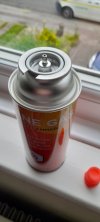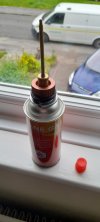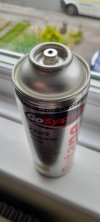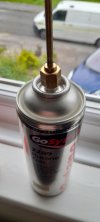Phil_Vincent
Registered
Evening all, I hope you are well. I've just fulfilled a dream I've had since I was about six and taken delivery of my first live steam engine. An Accucraft Dora.
I have some questions, I have tried to search, but the search keeps coming back saying the word "oil" is too short and is left off, so I jsut get a million search hits for steam. Not helpful. Anyway, the questions!
1. I've bought a couple of small Wilesco steam oils (15ml in each) is this going to last me days or years? I'm not sure how much will be used to fill her up. I'm guessing a Ruby uses a similar amount. What is a viable alternative? That is preferably accessible in Australia.
2. Is 3 in 1 good enough to be used for oiling wheels and linkages etc?
3. Is a bottle of butane from Bunnings (hardware store) with the multi adapter going to be OK to fill this up? The gas connector on the loco just looks like what is on the bottom of clipper lighters I remember from my misspent youth, so I'm guessing it will just fit on?
4. I don't think I can bring myself to spend another 100 odd bucks on the pressure gauge just yet, but are there any other recommendations for accoutrements?
All help welcome!
I have some questions, I have tried to search, but the search keeps coming back saying the word "oil" is too short and is left off, so I jsut get a million search hits for steam. Not helpful. Anyway, the questions!
1. I've bought a couple of small Wilesco steam oils (15ml in each) is this going to last me days or years? I'm not sure how much will be used to fill her up. I'm guessing a Ruby uses a similar amount. What is a viable alternative? That is preferably accessible in Australia.
2. Is 3 in 1 good enough to be used for oiling wheels and linkages etc?
3. Is a bottle of butane from Bunnings (hardware store) with the multi adapter going to be OK to fill this up? The gas connector on the loco just looks like what is on the bottom of clipper lighters I remember from my misspent youth, so I'm guessing it will just fit on?
4. I don't think I can bring myself to spend another 100 odd bucks on the pressure gauge just yet, but are there any other recommendations for accoutrements?
All help welcome!




